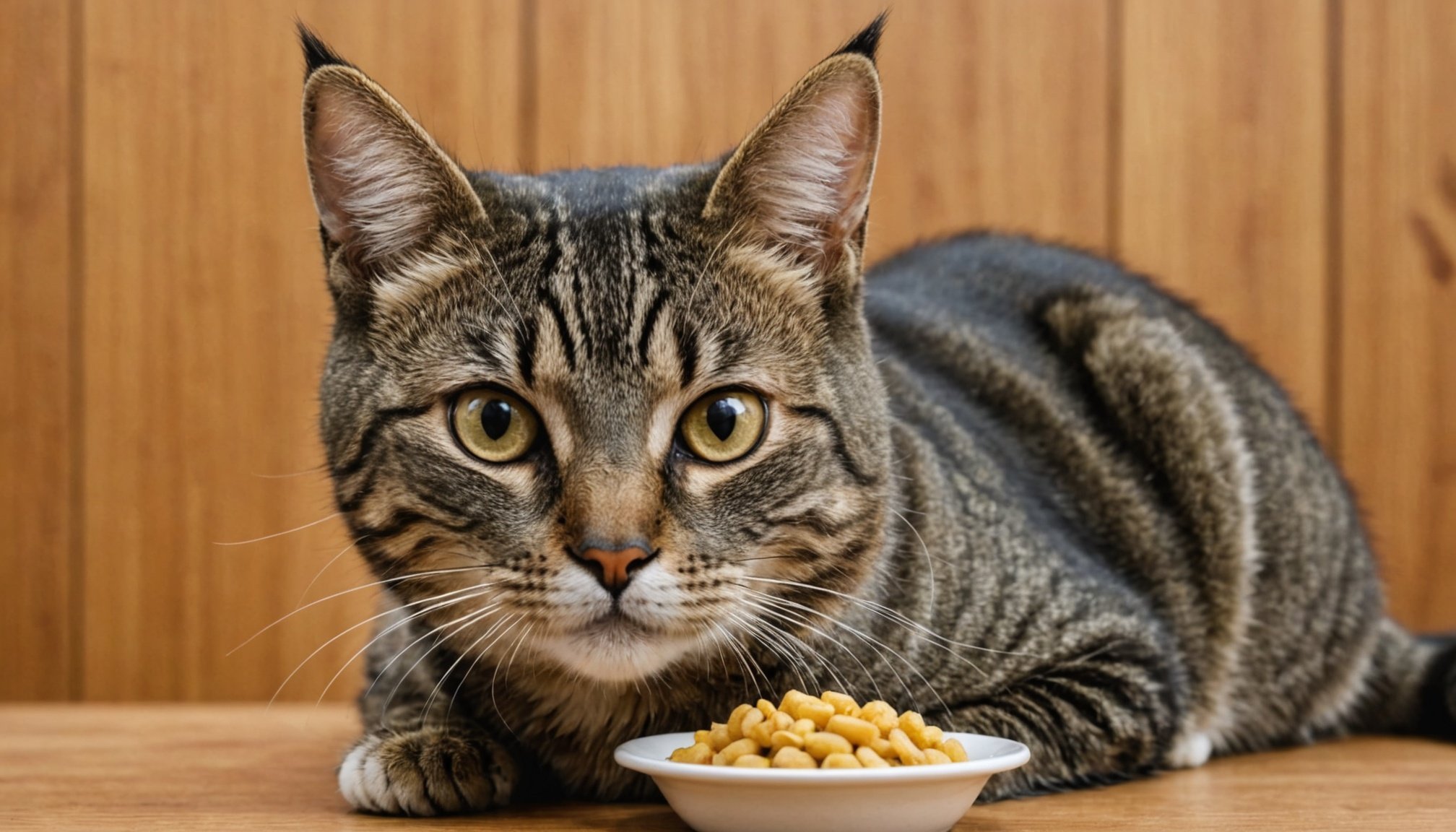Enhancing Your Cat’s Diet to Prevent Urinary Tract Infections: A Comprehensive Guide
Understanding Urinary Tract Infections in Cats
Urinary tract infections (UTIs) are a common health issue in cats, particularly in older or overweight felines. These infections can cause significant discomfort and, if left untreated, can lead to more severe health problems such as kidney stones or even life-threatening conditions.
Why UTIs Occur in Cats
UTIs in cats often result from a combination of factors, including:
Also to see : Top strategies for a smooth and stress-free vet experience for your feline friend
- Dehydration: Cats that do not drink enough water can concentrate their urine, making it more likely for minerals to crystallize and form stones.
- Diet: The type of food your cat eats can significantly impact their urinary health. Dry food, for instance, can lead to dehydration if not balanced with adequate water intake.
- Genetics: Some breeds are more prone to urinary issues due to their genetic makeup.
- Stress: High levels of stress can exacerbate urinary problems in cats.
The Importance of Hydration
Hydration is crucial for maintaining your cat’s urinary health. Here are some strategies to ensure your cat is drinking enough water:
Encourage Water Intake
- Multiple Water Sources: Place multiple water bowls around the house to encourage your cat to drink more frequently.
- Water Fountains: Cats often prefer running water, so using a water fountain can be an effective way to increase their water intake.
- Wet Food: Feeding your cat wet food can help increase their moisture intake. Wet food typically has a higher water content compared to dry food.
Monitoring Hydration
- Check the Litter Box: If your cat is not urinating frequently enough or if the urine is highly concentrated (dark yellow), it may be a sign of dehydration.
- Consult Your Vet: Regular check-ups with your veterinarian can help identify any hydration issues early on.
Choosing the Right Cat Food
The type of food you feed your cat plays a critical role in preventing urinary tract infections.
Also to discover : Designing entertaining and productive indoor workout routines for your cat
Wet vs. Dry Food
| Characteristics | Wet Food | Dry Food |
|---|---|---|
| Water Content | High (70-80%) | Low (10-15%) |
| Palatability | Generally higher | Can be lower |
| Urinary Health | Helps maintain hydration and dilute urine | May lead to dehydration if not balanced with water intake |
| Convenience | Requires refrigeration after opening | Can be left out for longer periods |
Prescription Diets
For cats prone to urinary issues, your veterinarian may recommend a prescription diet specifically designed to support urinary health. These diets often include ingredients that help reduce the pH of the urine and prevent mineral crystallization.
Managing Stress
Stress can significantly impact your cat’s overall health, including their urinary health. Here are some tips to reduce stress in your feline friend:
Create a Calm Environment
- Quiet Spaces: Provide quiet, secluded areas where your cat can retreat when feeling overwhelmed.
- Consistent Routine: Maintain a consistent daily routine to reduce anxiety.
- Play and Interaction: Engage in play and interactive activities to keep your cat mentally and physically stimulated.
Litter Box Maintenance
A clean and accessible litter box is essential for your cat’s urinary health.
- Multiple Litter Boxes: Ensure there is at least one litter box per cat, plus one extra.
- Regular Cleaning: Clean the litter box daily and change the litter completely every week.
- Reduce Stress Around the Litter Box: Avoid placing the litter box in high-traffic areas or near their food and water bowls.
Identifying and Addressing Food Sensitivities
Food sensitivities can sometimes contribute to urinary issues in cats. Here’s how you can identify and address these sensitivities:
Common Food Sensitivities
- Protein Sources: Some cats may be sensitive to certain protein sources like beef or dairy.
- Grains: Grains such as corn or wheat can also cause sensitivities.
Transitioning to a New Diet
If you suspect your cat has a food sensitivity, it’s important to transition them to a new diet gradually.
- Gradual Transition: Mix the new food with their current food over a period of 7-10 days to prevent digestive upset.
- Monitor for Changes: Keep an eye on your cat’s overall health, including their urinary health, skin condition, and digestive health.
Practical Tips for Preventing UTIs
Here are some practical tips to help prevent urinary tract infections in your cat:
Regular Veterinary Check-Ups
Regular check-ups with your veterinarian are crucial for early detection of any urinary issues.
Keep Your Cat Active
Encourage physical activity through play to help maintain overall health and reduce the risk of obesity, which is a risk factor for UTIs.
Monitor Urinary Health
Keep an eye on your cat’s litter box behavior and urine output. If you notice any changes, such as straining to urinate or blood in the urine, consult your veterinarian immediately.
Quotes from Veterinarians
- “Maintaining your cat’s hydration is key to preventing urinary tract infections. Ensuring they have access to fresh water at all times is crucial.” – Dr. Jane Smith, Veterinarian
- “A balanced diet that includes the right mix of nutrients can significantly reduce the risk of UTIs in cats. Consult with your veterinarian to choose the best diet for your pet.” – Dr. John Doe, Veterinarian
Preventing urinary tract infections in your cat requires a multifaceted approach that includes ensuring adequate hydration, choosing the right food, managing stress, and maintaining good litter box hygiene. By following these strategies and staying vigilant about your cat’s health, you can help keep your feline friend happy and healthy.
Detailed Bullet Point List: Strategies for Enhancing Your Cat’s Diet and Preventing UTIs
-
Hydration:
-
Provide multiple water sources around the house.
-
Use water fountains to encourage drinking.
-
Feed wet food to increase moisture intake.
-
Monitor litter box behavior for signs of dehydration.
-
Diet:
-
Choose between wet and dry food based on your cat’s needs and preferences.
-
Consider prescription diets for cats prone to urinary issues.
-
Gradually transition to new foods to prevent digestive upset.
-
Stress Management:
-
Create quiet, secluded spaces for your cat.
-
Maintain a consistent daily routine.
-
Engage in play and interactive activities.
-
Litter Box Maintenance:
-
Ensure one litter box per cat plus one extra.
-
Clean the litter box daily and change the litter completely every week.
-
Reduce stress around the litter box by placing it in a quiet area.
-
Regular Check-Ups:
-
Schedule regular veterinary check-ups for early detection of urinary issues.
-
Monitor your cat’s overall health, including urinary health, skin condition, and digestive health.
By implementing these strategies, you can significantly enhance your cat’s diet and reduce the risk of urinary tract infections, ensuring a healthier and happier life for your feline companion.











